Galaxy of a Different Color
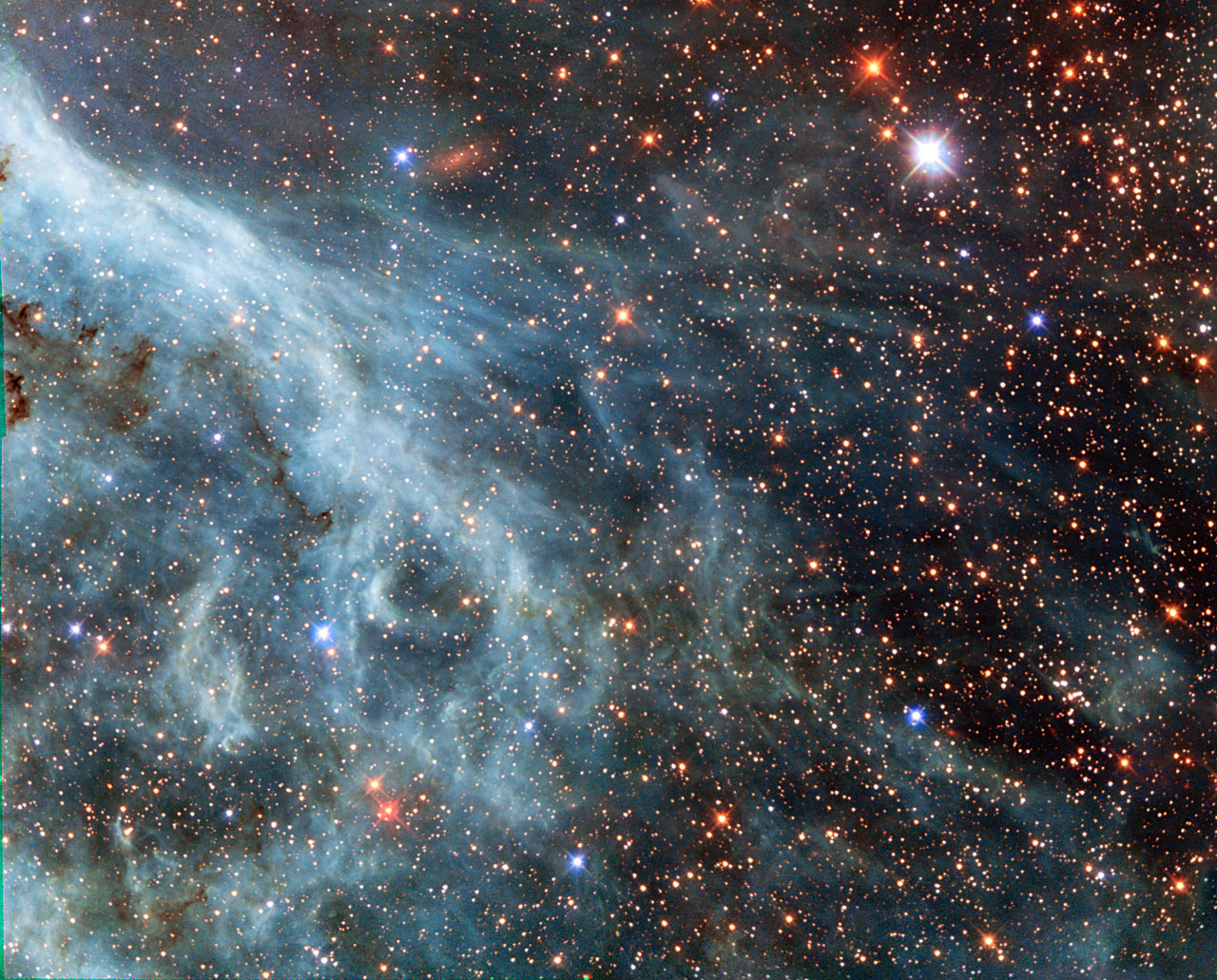
Wednesday, Oct. 15, 2014: This image by Hubble Space Telescope depicts a portion of the Large Magellanic Cloud (LMC), a small nearby galaxy orbiting our galaxy, the Milky Way. Specifically, in this photo we see the Tarantula Nebula's outlying areas. A filter passing near-infrared light causes this image to appear quite different than most photos of the LMC. Usually an R filter passes red light highlighting hydrogen gas, but here other emission lines glow with blue and green hues. Image released Oct. 13, 2014.
— Tom Chao
At the End of the Trail
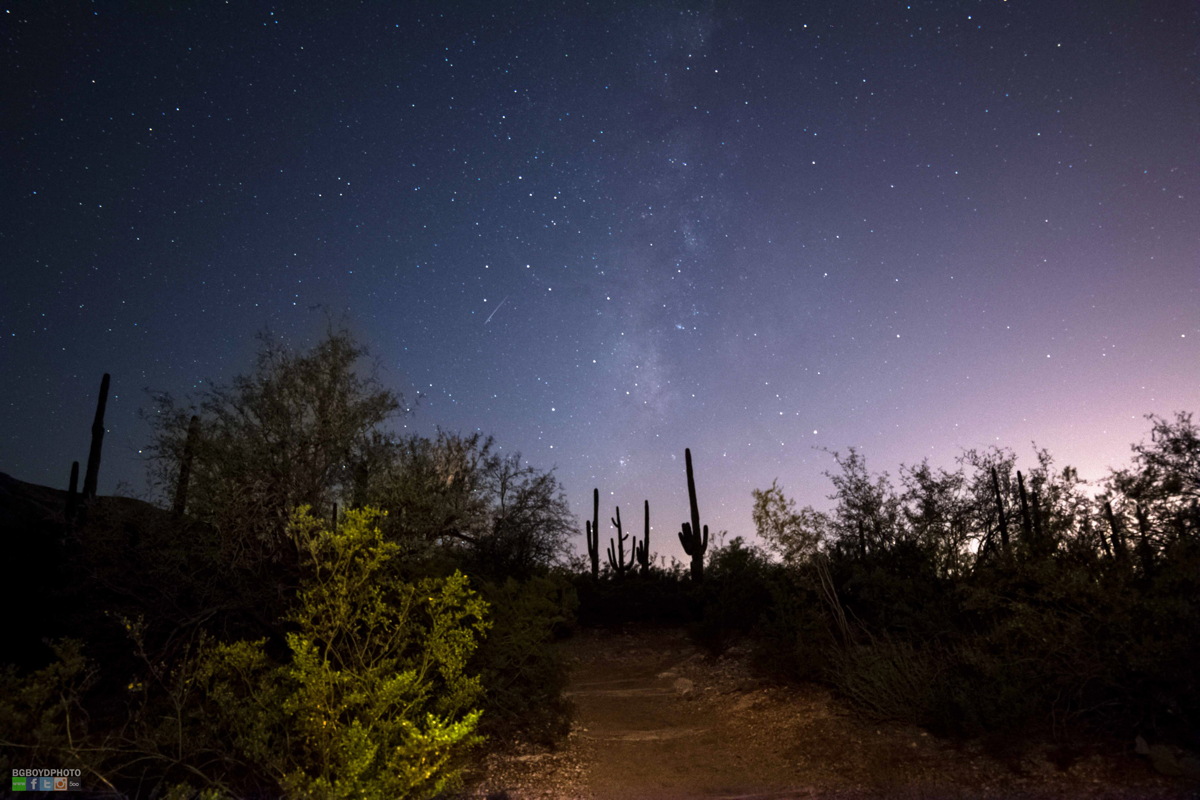
Thursday, Oct. 16, 2014: Astrophotgrapher BG Boyd of Tucson, Arizona, sent in a photo of a Draconid meteor next to the Milky Way, taken on Oct. 10, 2014, on Douglas Springs Trail. He writes in an email message to Space.com: “I went out pretty early (45 minutes after sunset) on the evening of the 10th to see if I could catch any meteors before the waning gibbous moon rose into the sky. I was lucky enough to see several, and actually captured this one just to the left of the Milky Way.”
— Tom Chao
Moon and Rings
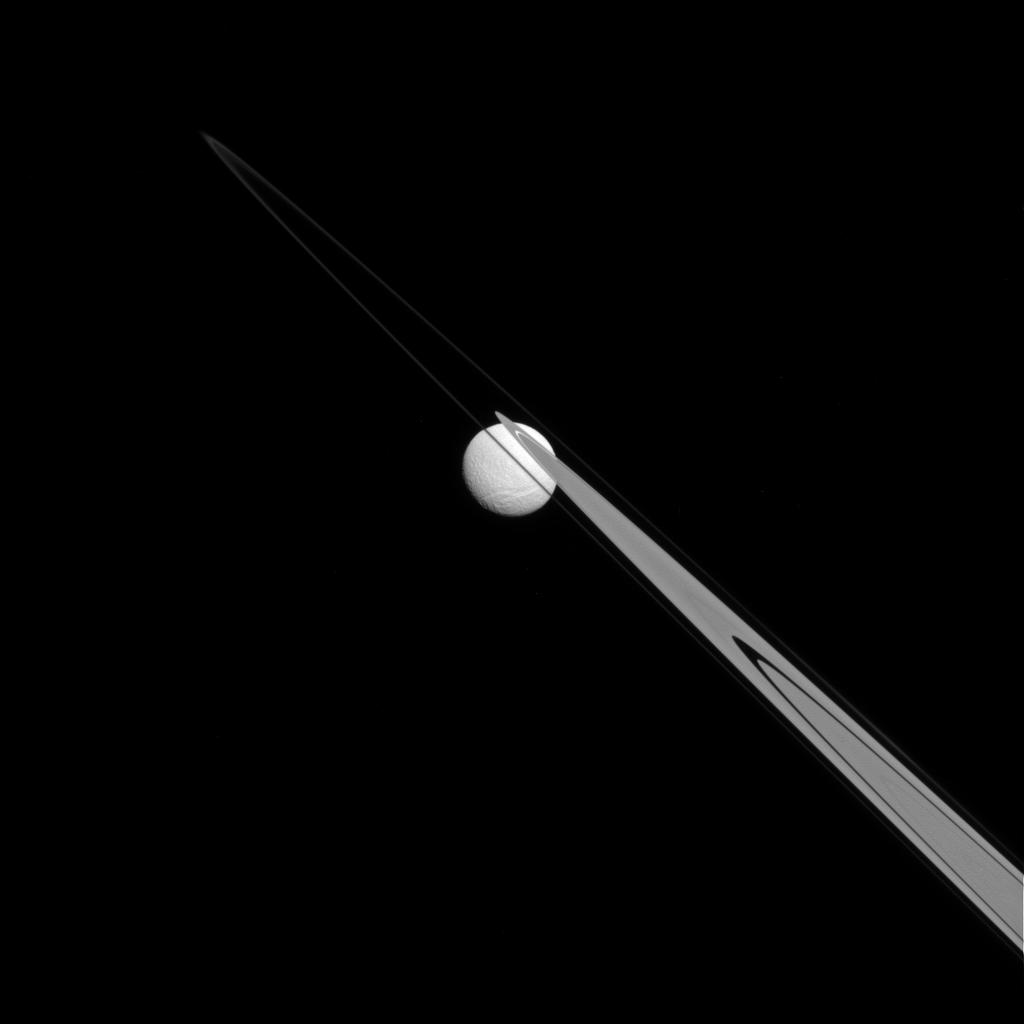
Friday, Oct. 17, 2014: Saturn’s moon Tethys appears as if impaled on the A and F rings in this photo by Cassini spacecraft. Tethys (660 miles, or 1,062 kilometers across) consists, similar to the ring particles, primarily of ice. The moon appears through the Keeler gap in the A ring, kept clear by the small moon Daphnis (not pictured). Cassini spacecraft obtained the image in visible light on July 14, 2014.
— Tom Chao
Hail to the Princess Aurora
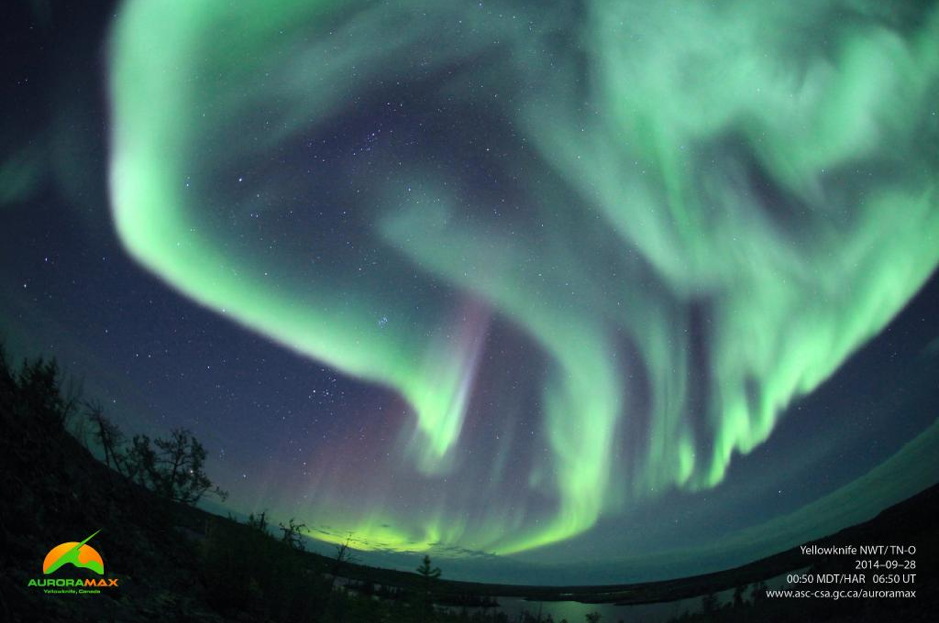
Monday, Oct. 20, 2014: Canada's automated aurora camera tweeted this photo, writing: "AURORAMAX GALLERY • Latest photo of #aurora borealis above #Yellowknife NWT taken at 00:50 MDT on Sept 28, 2014."
— Tom Chao
Landforms on Mars
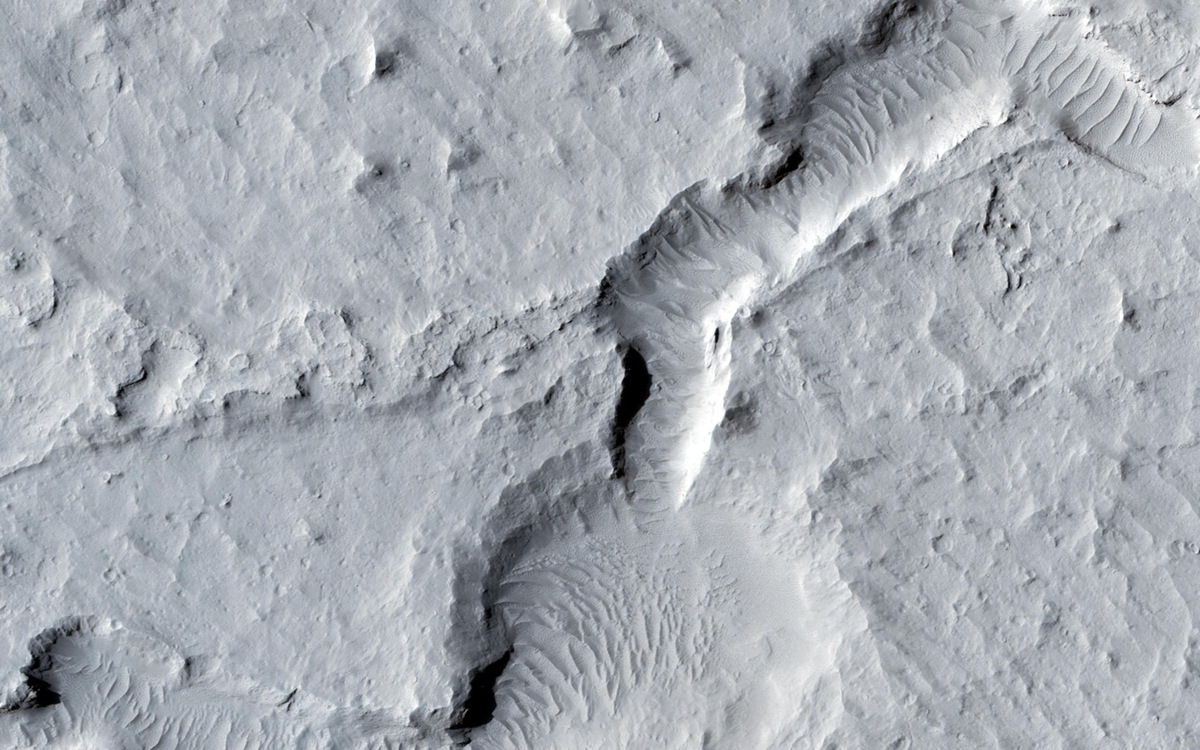
Tuesday, Oct. 21, 2014: Geologic diversity on Mars is shown in this image of the eastern Elysium Planitia region. Abutting this field is a mesa, which displays dark streaks on its slopes. Perhaps these streaks are caused by freshly disturbed darker material that hasn’t faded yet. Dust avalanches like these commonly occur in dust-covered Martian regions. Further south, a line of pits and also fretted terrain are visible, then a network of channels and depressions dominating the southern part of the image. The photo, taken by NASA's Mars Reconnaissance Orbiter, was released on Oct. 15, 2014.
— Tom Chao
Baby, I Can See Your Halo
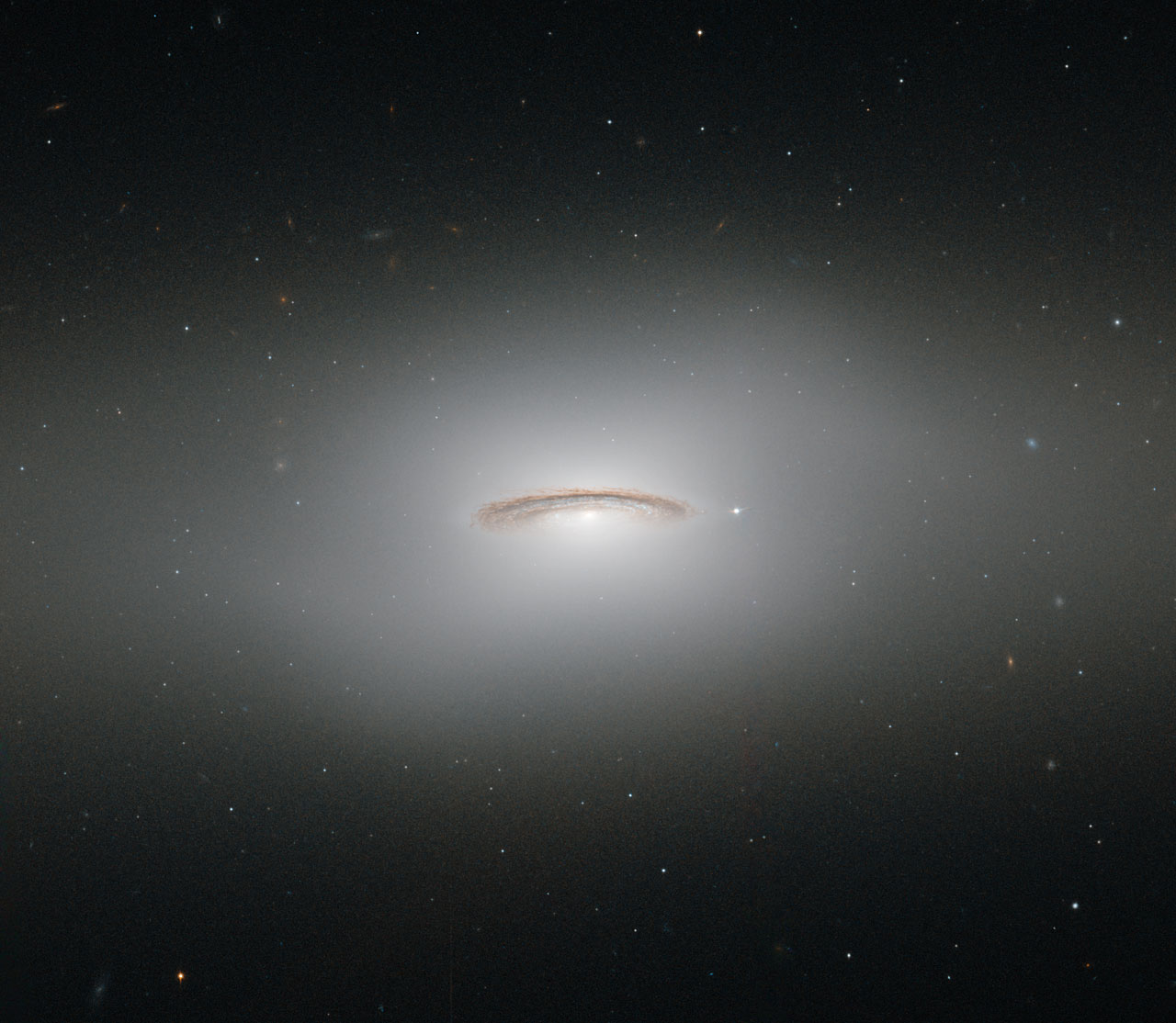
Wednesday, Oct. 22, 2014: Galaxy NGC 4526 shows dark dust lanes and a bright glow that give it the appearance of a halo. NGC 4526 represents one of the brightest lenticular galaxies, a category between spirals and ellipticals. Two known supernova explosions have been sighted in it, during 1969 and 1994. An enormous supermassive black hole lies at its center with the mass of 450 million suns. NGC 4526 is part of the Virgo cluster of galaxies. Image released Oct. 20, 2014.
— Tom Chao
Very Hot and Very Flat and That Is That in Bonneville
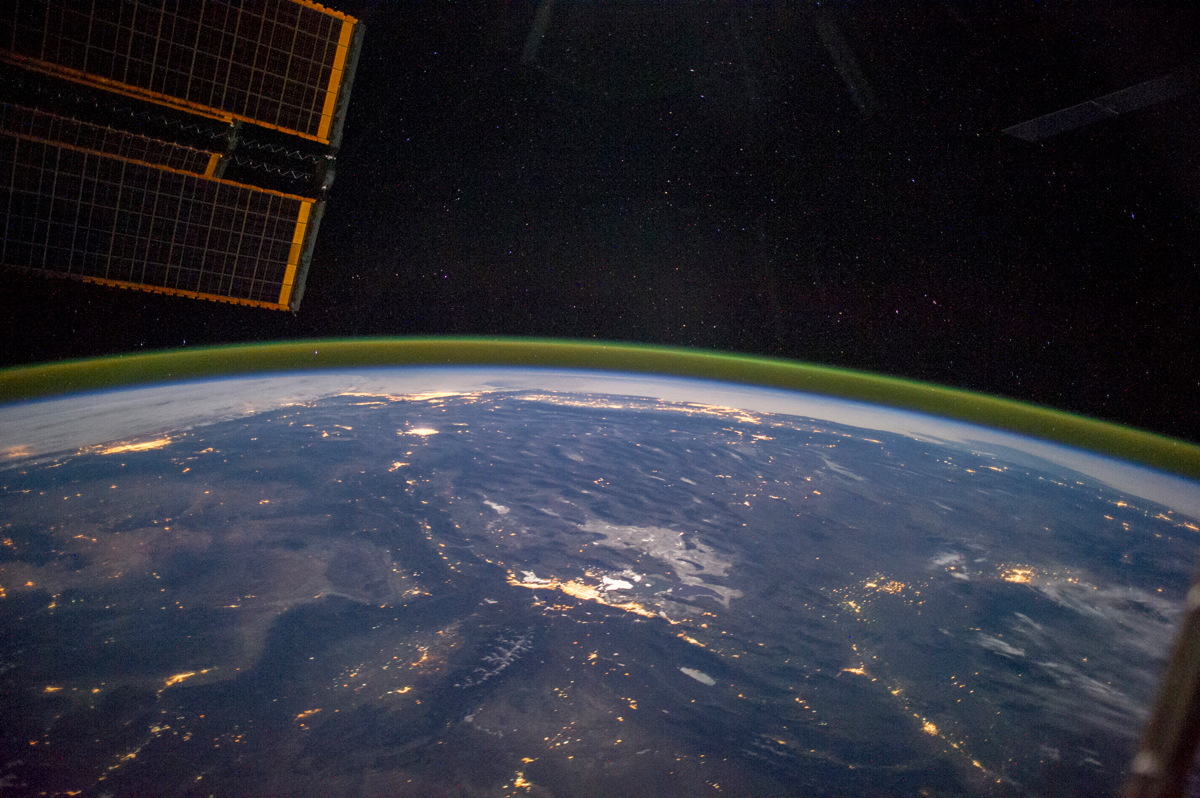
Thursday, Oct. 23, 2014: Astronauts on the International Space Station (ISS) obtained this photo of the western United States from a point over Nebraska in early October 2014. From left to right along the Earth’s horizon, we see Phoenix, Arizona, then Los Angeles, San Francisco, and finally Portland, Orgeon. The bright area in the foreground represents the Ogden-Salt Lake City-Provo region of Utah with the Bonneville Salt Flats just above. Green airglow appears over the Earth. Moonlight glints from the solar arrays of the ISS in the foreground.
— Tom Chao
Get the Space.com Newsletter
Breaking space news, the latest updates on rocket launches, skywatching events and more!
Out on a Limb
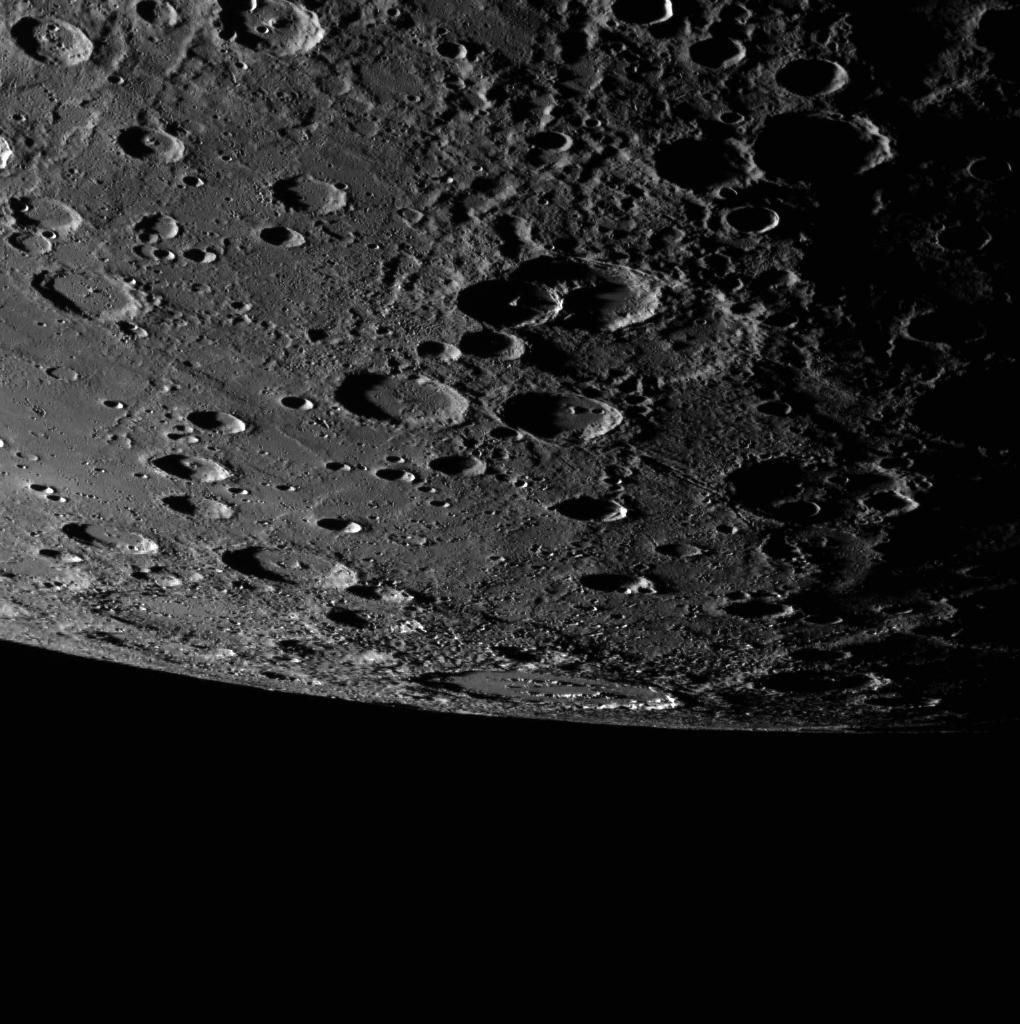
Friday, Oct. 24, 2014: Alver crater appears on the limb of Mercury, just on the horizon. Secondary crater chains leading toward the top right appear to originate from the Rembrandt basin to the north. MESSENGER spacecraft used its Wide Angle Camera (WAC) of the Mercury Dual Imaging System (MDIS) to obtain this image, released Oct. 22, 2014.
— Tom Chao
So When You Look Into the Sun
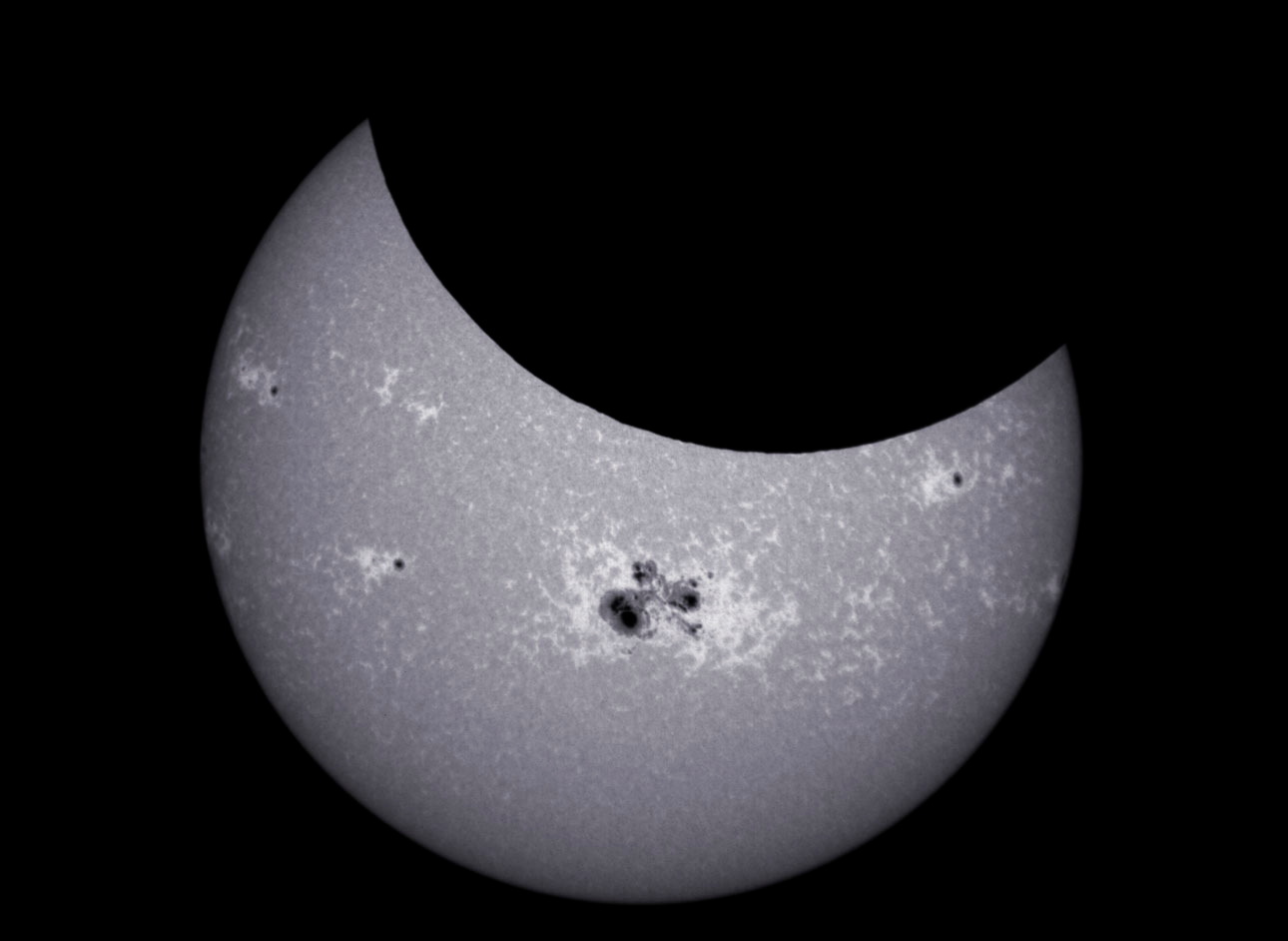
Monday, Oct. 27, 2014: Astrophotographer Chris Schur sent in a photo of the partial solar eclipse, taken in northern Arizona, on Oct. 23, 2014. He used a calcium filter, which isolates a narrow band of light, showing magnetic features on the sun. He writes in an email message to Space.com: "Finally [I] do not have to deal with our Arizona monsoon any more, [as] the sky cleared out nicely for the morning sunspot shootout and later for the partial eclipse, which [covered] 44 percent [of the sun's disk] here in northern Arizona…. Not too many shots of the partial eclipse will be with calcium filters!"
— Tom Chao
Artificial Star
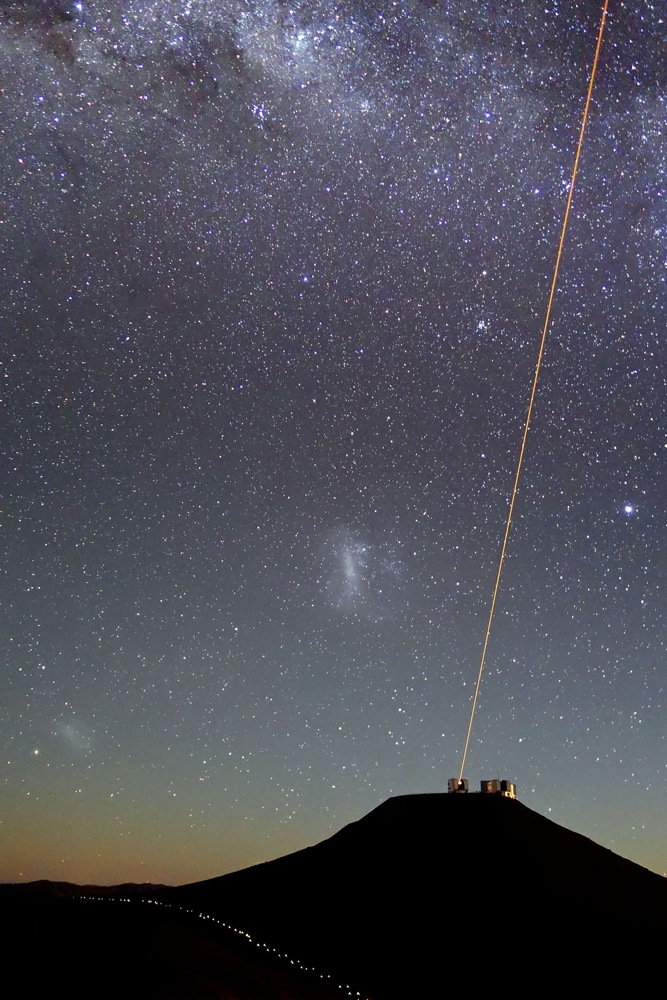
Tuesday, Oct. 28, 2014: A laser beam slices upwards from Unit Telescope 4 of ESO's Very Large Telescope, at Paranal Observatory in Chile. To the left of the beam, the two Magellanic Clouds appear as fuzzy blobs. On the right of the beam, bright star Canopus shines. The laser creates an artificial star about 90 kilometers from the ground, providing a guide for the adaptive optics of the telescope to reduce distortion from water vapor, pollution and turbulence in the Earth’s atmosphere. Image released Oct. 27, 2014.
— Tom Chao
Join our Space Forums to keep talking space on the latest missions, night sky and more! And if you have a news tip, correction or comment, let us know at: community@space.com.










